The tea culture of Taiwan is said to have started in the 17th century. It is a deeply rooted part of the Taiwanese people’s daily lives and has gone through numerous innovations during its history. HEMEL was founded in 2021 and it presents an unprecedented haute couture brewed tea with the below concept.
“HEMEL Haute Couture Brew Tea was created to deliver an unexpected tea experience to the world.”
HEMEL’s bottled brew tea sparkles under the sunlight and the tea’s beautifully clear color is a sight to behold.
This bottle of HEMEL Tea alone instantly creates a beautiful scene for tea.

HEMEL’s tea is the highest quality blend tea, made from very rare and hand picked fresh tea leaves. HEMEL’s brand manager, Yeh Chen Kang explains, “At HEMEL, we not only produce teas, but we aim to produce the finest tea experiences that will shake up people’s senses.”
He searched for designers in Taiwan to bring his vision of HEMEL to life, but ended up finding a design team in Japan.
They are the first high end tea brand to come out of Taiwan. What kind of tea experiences do they aim to create? We interviewed Yeh along with creative director Evan Tsai and tea master Josh Chang to learn more.
From Taiwan to the world, how HEMEL’s journey began
“First, please have a cup of tea.”
In Taiwan, conversations between people traditionally begin by sharing a cup of tea, even in business settings. While café culture has become increasingly popular today, Taiwanese tea still has an unshakable presence in everyday life. Popular drink stands line the streets and offer a wide variety of Taiwanese teas, while coexisting with historic tea houses.
HEMEL haute couture brewed tea was founded in December 2021 and it gives an unprecedented and new concept to the Taiwanese tea culture.

From green tea, oolong tea, white tea and black tea, there is truly a wide variety when it comes to Tawainese tea.
Japanese people are often surprised at the sheer variety. HEMEL challenged the conventional Taiwanese tea culture, which usually enjoys single origin high-end teas, by creating a brand of blended tea.
How did this unconventional brand idea come to be?
Brand manager Yeh studied abroad in Japan and worked in the apparel business. Because he spent some time away from Taiwan, he realized how precious the Taiwanese tea he was so accustomed really was.
“I don’t think people around the world, or even in Taiwan, realize just how precious Taiwanese tea really is. Even if you combine the plains and high mountainous regions, there are only about 12,000 hectares of land where tea can be grown in Taiwan.”
“In contrast, wineries in France cover an area about 60 times that size. The Burgundy region alone has about 2.5 times the land and it only accounts for about 3 percent of the total French wine production. If you think about it, Taiwanese tea is a very precious product. Even among them, the Gaoshan Tea and Dongfang Meiren Tea that we use at HEMEL are even more rare.”

“Another product that is considered rare in the world is champagne, which is produced in the Champagne region of France. Even this region is three times larger than the size of Taiwan’s tea plantations. It is said that Taiwanese tea originated in the 17th century, which is the same period as the birth of champagne. Of course, the influential power of the nations may play a role, but it made me realize that Taiwanese tea has tremendous potential.”
“In Japan, people often share an alcoholic beverage while socializing. However, in Taiwan not many people drink alcohol with their meals and it is tea that accompanies our meals and social interactions. There is a ritualistic manner of drinking tea and it can be adapted in all occasions, even before, during and after meals.”
Yeh set out to share the Taiwanese tea experience with the world, along with his middle school classmate and tea master Josh, and his partner Evan, who has a background in fashion design in Japan. Together, they founded HEMEL.
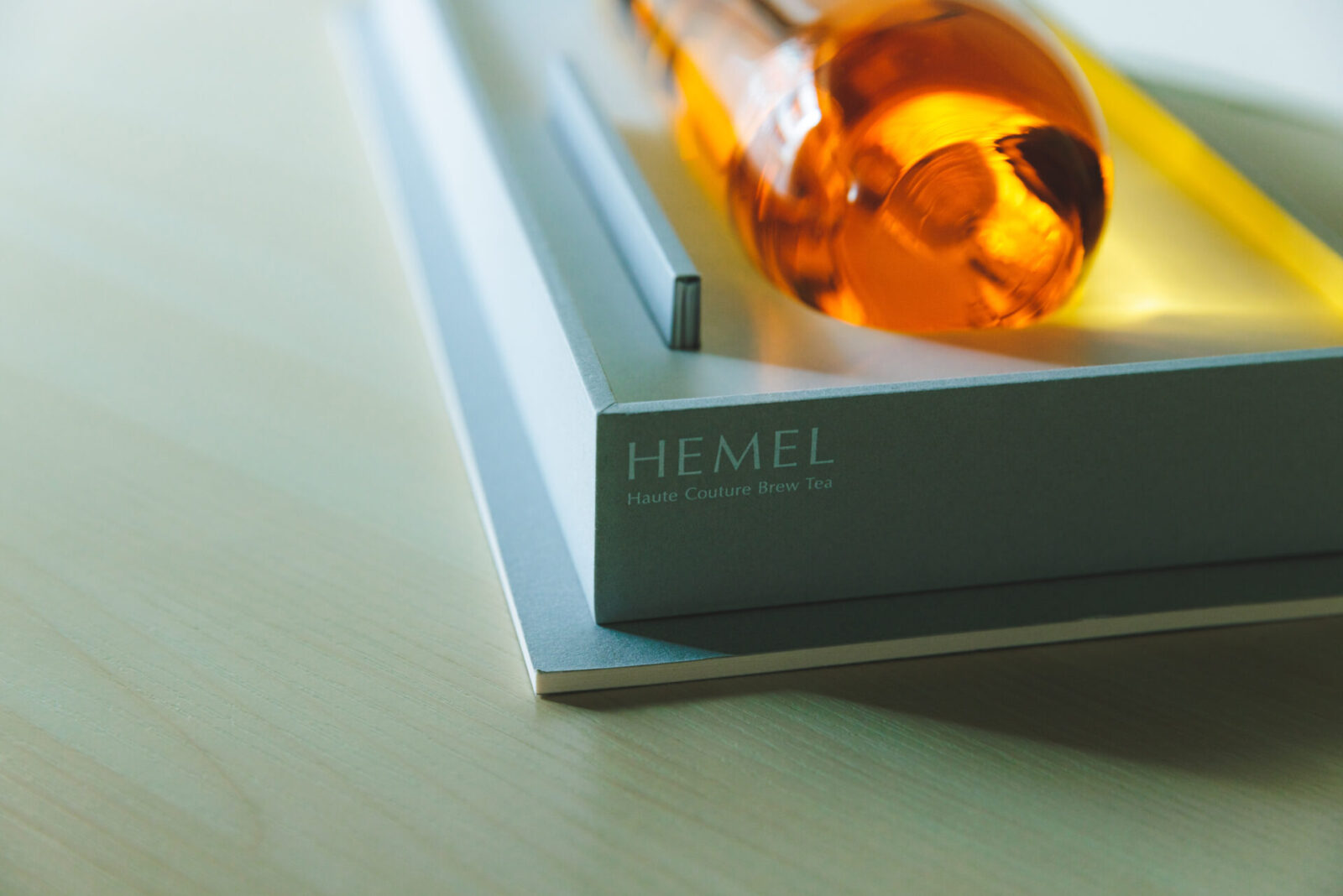
Yeh explains why he decided to make HEMEL tea a blended brand rather than a single origin brand.
“At HEMEL, we only buy rare and hand-picked fresh leaves from various tea plantations in Taiwan. The leaves are harvested only during the two hours of the day when the leaves are in their peak condition. We then process the tea within one hour after it has been picked. We are careful to extract the tea under its best possible condition.”
This is one reason why HEMEL chooses not to buy only specific tea leaves from specific tea growers.
“We are looking for the optimal balance of flavor that will be unique to HEMEL by blending multiple types of the finest tea leaves together. Even tea leaves that are harvested from the same plantation will taste different depending on the season and the year so our recipes also adapt. We believe this is the best way to achieve our concept of delivering an unexpected tea experience to the world.”
The flavor and aroma of the tea changes every year depending on the weather. With single origin teas, we can enjoy the unique flavors of each tea farm, but HEMEL creates their own recipes by blending only the finest tea leaves of each farm.
Their original recipes are developed by tea master Josh and other veteran tea masters.
In fact, Josh’s father is a well known veteran tea master in Taiwan. From researching tea leaves to developing new extraction techniques, his father has provided his full support to the project.
“We have been working with veteran tea masters, who have worked in the forefront of Taiwanese tea for decades, to look for the best tea leaves and we have done hundreds of tea tastings together. We have finally arrived at four flavors that we consider to be the ultimate blends that express the very core element of each tea variety.”
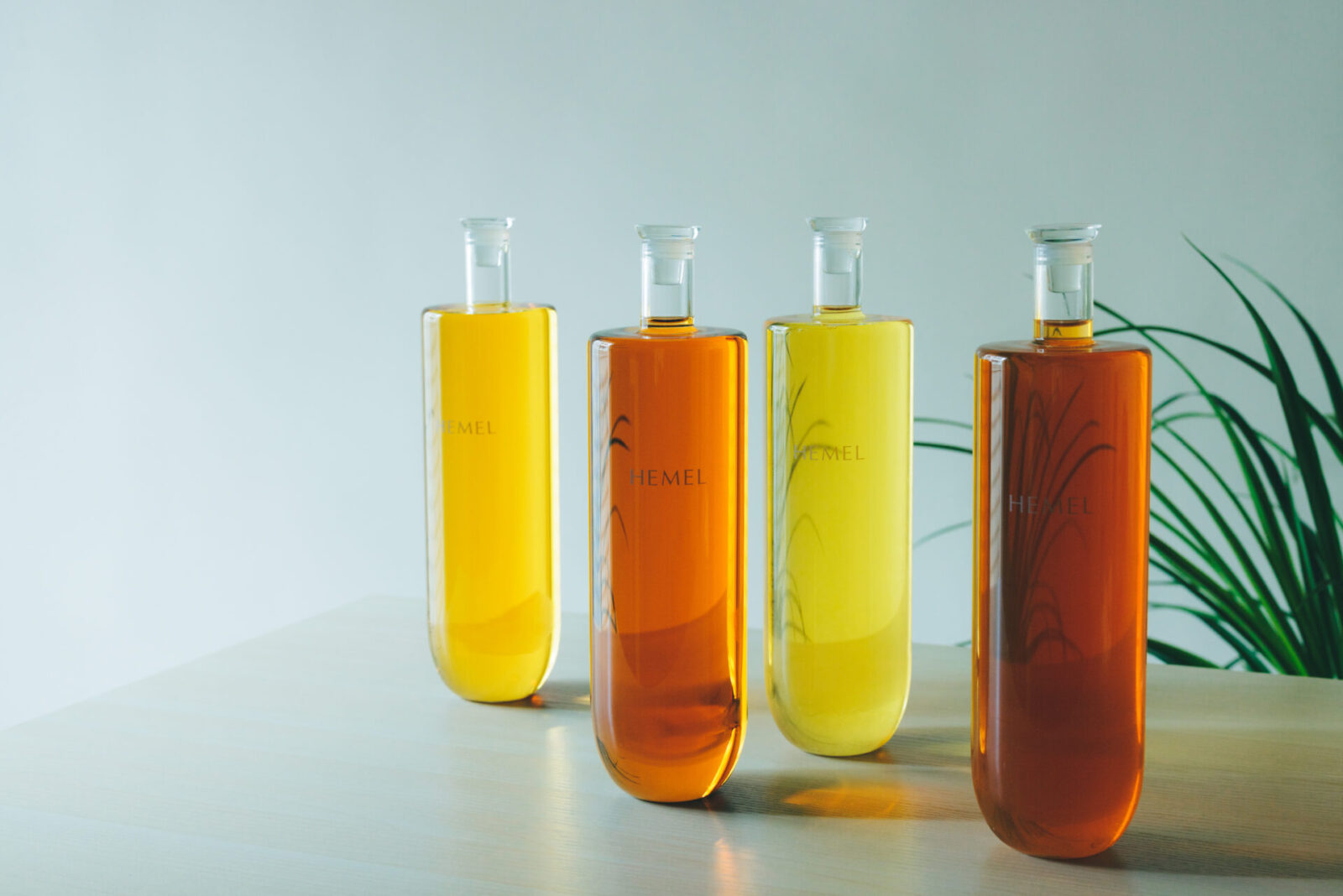
In the beginning, there were 4 flavors
HEMEL produces new recipes for their tea which are released irregularly. The first four flavors that they released are: The Classy, Time-Honored, J. Formosana, and Zintun 18.
We started off by tasting The Classy and Zintun 18.
The Classy is an elegant and fresh tasting blend of oolong teas which is made from tea leaves that were slowly grown in the 2,500 meter high Da Yu Ling Mountains and tea leaves from young oolong tea trees from Lala Mountain, which is 1,600 meters in altitude. It is the perfect tea to enjoy before a meal.
When the cork of the bottle is released and the tea is poured into the glass, a soft and floral aroma fills the air.

After first enjoying the aroma, we take a sip and are surprised to find a flavor that is clearer than any tea we have experienced before. It is almost like drinking a tea extract, where all the appealing characteristics of tea are concentrated and direct.
Josh told us about their special process that allows for them to extract the maximum aroma and flavor of the tea leaves.
“When drinking Taiwanese tea, there should be no bitterness or astringency. However, it takes a lot of skill to create tea without them. HEMEL uses a unique brewing method that we developed on our own that allows us to make top quality tea that is free of bitterness. The tea gives you the sensation of being in the high mountains of Gaoshan yourself.”
Next, we were served Zintun 18, a blend of Hongyu Hongcha tea from Nichigetsutan, which is said to be the best tea in Taiwan, and black tea from the young trees of Lala Mountain.
The combination of the spicy and caramel-like sweetness of the Hongyu Hongcha tea with the freshness of the tea leaves from the young tea trees creates a multi-layered flavor in a single glass.
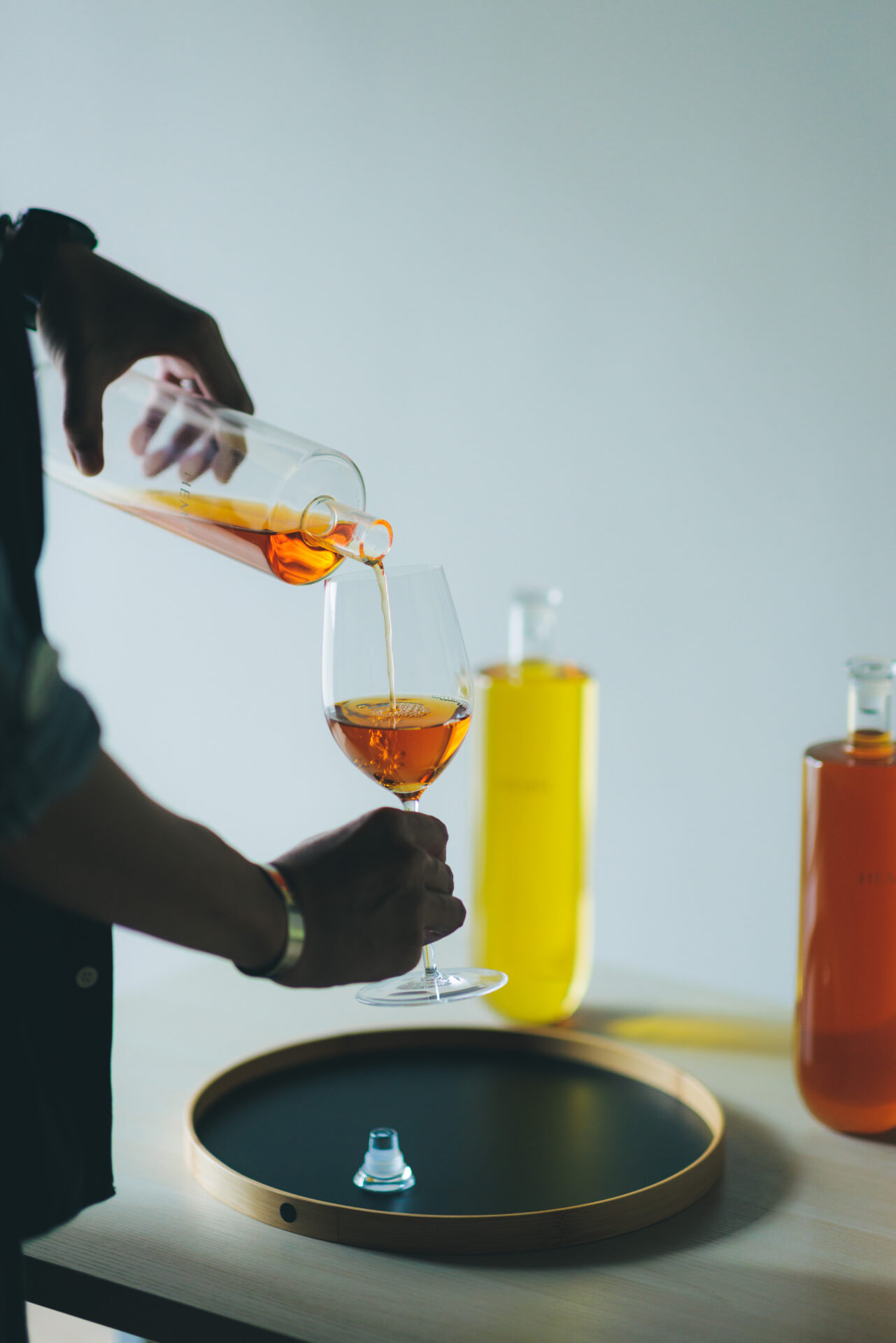
The other two tea flavors at HEMEL are Time-Honored, a blend of the fresh Qingxin oolong tea and Dong Ding Oolong tea, which has a full bodied flavor, and J. Formosana, which is an exotic tea that is a blend of the popular Dongfang Meiren tea and Mixiang Hongcha, a honey flavored black tea.
HEMEL has a research and production facility called the Blending Lab where they analyze the temperature, brewing time, water characteristics and pH levels to develop the best extraction method for each type of tea leaf. The only ingredients they use are tea leaves and water. Their brewing process takes 144 to 192 hours and it is extracted very slowly at a low temperature. They say that they researched their method for two years before mastering their techniques.
“Each tea leaf has its own unique characteristic, so we spent two years researching which conditions best extract the core elements of each tea leaf. At the same time, we experimented with what the best blending combinations were to create our products.”
The philosophy behind the glass bottle design
The beautiful shape of HEMEL’s glass bottle perfectly compliments the beauty of the clear and colorful teas.

Japanese designers were heavily involved in designing the HEMEL brand.
According to Yeh, he looked for designers in Taiwan, but ended up choosing one of the leading design companies in Japan. Although HEMEL did not have any track record at the time, he felt that the design company shared a similar vision to his own so he requested an appointment to meet with the designers.
“HEMEL’s products are made by getting rid of all the unnecessities and extracting only the best elements of the tea. This is why we wanted to capture the same concept for our bottles and packaging. We found the work of Nippon Design Center to express the true essence of things so we asked them to do our design.”
“We started out by sharing our vision and having them drink our tea. Over the course of a few years, we developed our product design from scratch. Haruka Misawa and Kohei Sasaki from Nippon Design Center and Misawa Design Lab did the design and Kako Nagase from Nippon Design Center worked on the product names and copywriting. They really understood our vision and expressed it perfectly so we are very grateful.”
HEMEL’s glass bottles do not have any labels. This design also aligns with their desire to make Taiwanese tea the center of their brand’s focus and eliminate any unnecessities.
The bottle is made from ultra-thin, light and a highly transparent glass so the expression of the liquid is displayed directly. It looks as if a clear body of liquid is floating in mid-air.
“When looking at this bottle, we think it will invite curiosity. Is the liquid really tea or is it a juice of a liquor? We want people to look at it and wonder what it may be.”

“The delicate glass bottle creates some nervous tension. The bottom of the bottle is curved so it may easily topple over, but because of this delicate balance people will handle it with more care. When people handle beautiful things, their movement and manners also become more refined.”
Yeh continued, “If more people moved and acted in a beautiful manner, we can create a more beautiful society.”
“The process of hand picking tea leaves and the creation of the glass bottles and packaging all require the work of skilled craftsmen. For the glass bottles, we use ultra-thin glass that is also used for laboratory equipment. These bottles are made both by machine and by hand before our brand name is engraved on them. There are some minor inconsistencies with each bottle, and the process of making them is inefficient, but we believe that is what makes them intriguing.”
“We live in a world today that is faced with various social issues. I feel that when distances between people increase, we lose some humanity and beauty. That is why we focus on the human touch, like the work of craftsmen. We want to be an entity that contributes to society by cherishing human value.”
Beautiful tea time nurtures beautiful people and a beautiful society. Tea, people and society are all connected.
This is the philosophy behind HEMEL.
To reduce their ecological footprint, they use materials from the FSC (Forest Stewardship Council) for their brand bags and make their paper boxes as simple as possible to minimize printing. The reason they do not add labels to their bottles is to make it easier to reuse them.
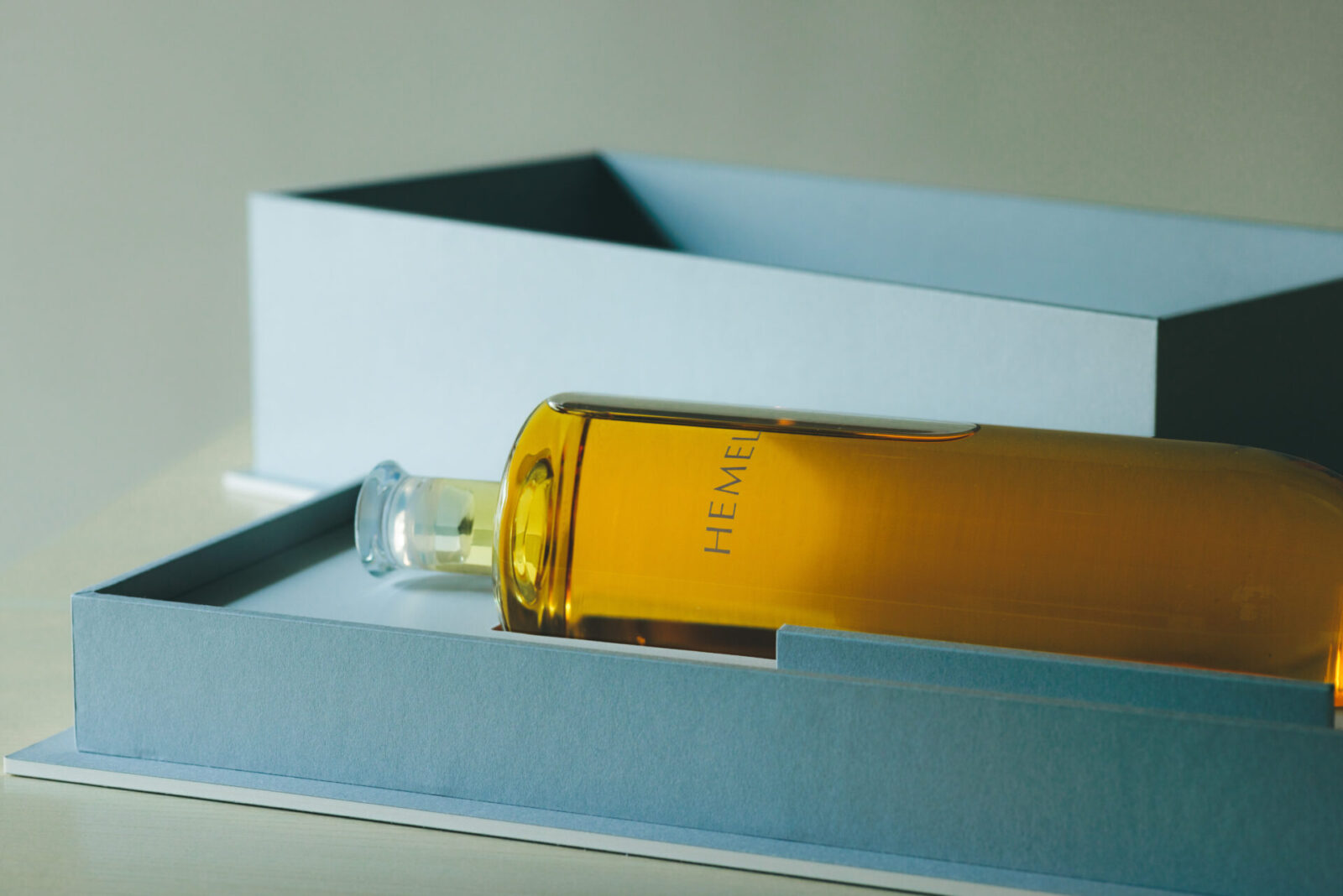
As HEMEL aims to become a global Taiwanese brand, they design their product for overseas export.
Because of this, they developed their bottle tea so that it would have a long shelf life of 90 days after shipping, even though it is not sterilized in high heat.
In order to deliver the best quality flavors to the world, they brew their tea to perfection after receiving an order, a single drop at a time, and ship it directly to their customers.
A newfound ‘time’ in the ultimate tea experience
HEMEL’s brand copy states that they will “deliver an unexpected tea experience to the world.” What kind of experience do they mean?
Yeh used the phrase “Ichigo-Ichie” (meaning a once in a lifetime encounter) to explain HEMEL’s vision.
“The phrase ‘Iccha-Ichie (one tea, one encounter)’ is often used when we drink tea in Taiwan. It is said that it comes from the Japanese phrase of ‘Ichigo-Ichie’ which is often used in the Japanese tea ceremony.”
“At HEMEL, we not only want to express tea, but we want to present a tea experience that will shake up your senses. Tea is something that can provide us with moments to pause and reflect. This does not mean that expensive teas are better. We hope that everyone will find their own favorite flavor and enjoy tea as a ‘shikohin.’”
A tea experience that shakes up our senses that Yeh is referring to is not about a luxurious, out of the ordinary experience.
“The beauty of tea is that it can be enjoyed even without the accompaniment of food. I think HEMEL is perfect for when I want to have a quiet moment to focus on myself or read a book. It can be enjoyed any time of day, from morning, noon to night. There is no need for music. This tea goes well with the sound of rain. Being in a quiet room and having a moment of self reflection to contemplate life can be very precious indeed.”
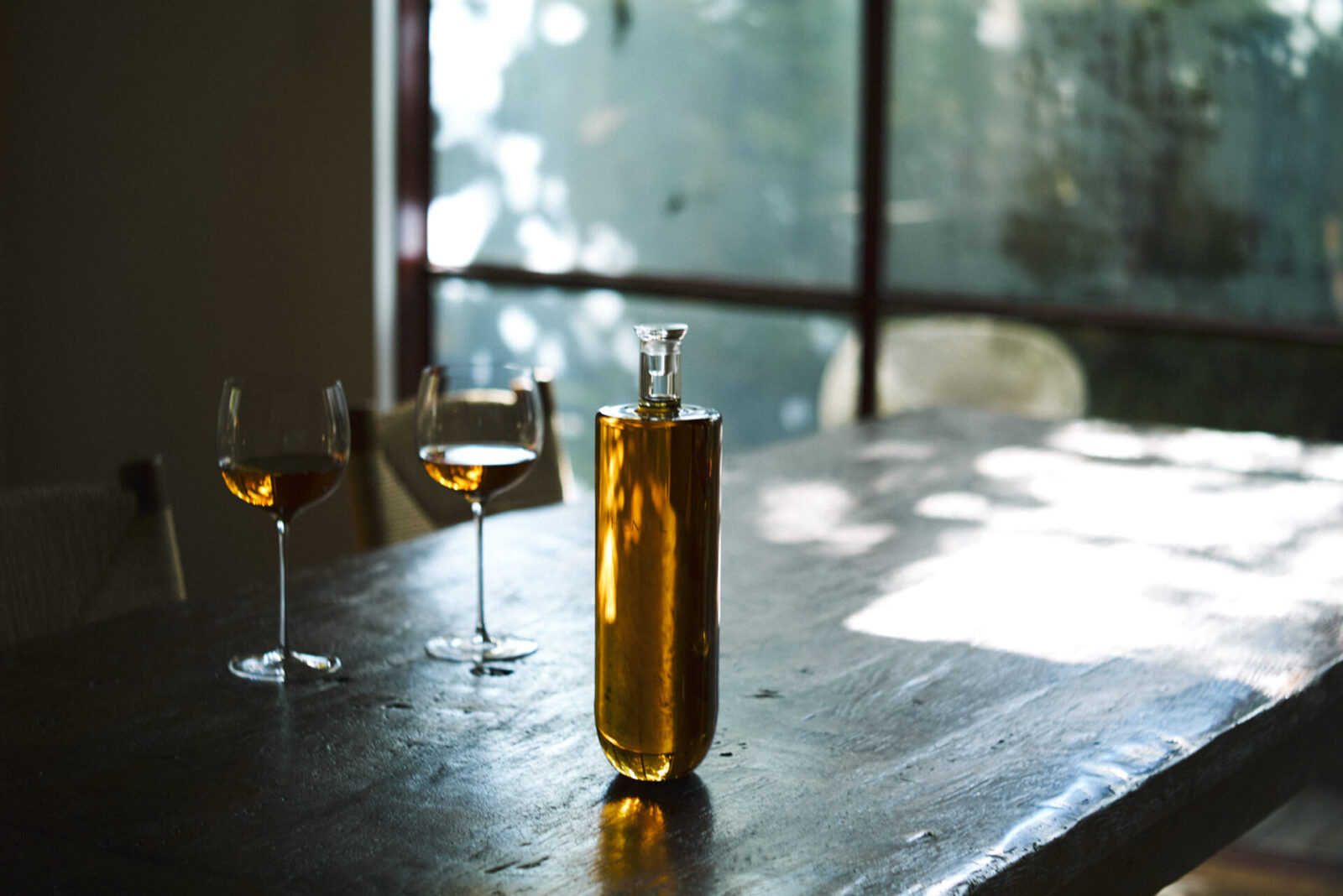
The above photo expresses Yeh’s ideal vision of a space where the lights are turned off and a soft breeze passes, so one can have a moment to think. It made us realize that shikohin is truly meant to provide joy for ourselves.
What HEMEL expresses is not only tea itself, but how an individual experiences time with tea. Yeh described these ways of looking at time and life as a “life stance.”
The official launch of HEMEL is scheduled to be in the summer of 2022. What kind of time melting tea experiences will be created in Japan? We look forward to experiencing our own Ichigo-Ichie.
HEMEL: https://hemeltea.com
The 4 Flavors of HEMEL
The Classy
A floral, clear and spirited spring-like flavor
A blend of the best quality Gaoshan oolong tea from Da Yu Ling Mountains (2500m) that have a fruit-like flavor, and the pure, floral oolong tea from the young tree trees of Lala Mountain in Taoyuan City.
Fresh|Floral|Sophisticated
14,700 yen (rate price based on price in Taiwan)
Time-Honored
A multi-layered flavor like a deep forest
The ripe fruitiness and heavy body that is unique to the highest quality Dong Ding oolong tea, grown in Nantoken Rokokukyo. When blended with the clearer Qingxin oolong tea, from the high altitudes of central Taiwan (2000m), its robust flavor becomes even more vibrant on the palate.
Full-bodied|Rich|Classic
11,600 yen (rate price based on price in Taiwan)
J. Formosana
An exotic flavor with a hint of honey
The Dongfang Meiren tea and Mixiang Hongcha tea can only be cultivated in plantations where the white backed planthopper, a bug that bites the tea leaves and stimulates fermentation, lives. A blend of the honey-like sweetness of the Dongfang Meiren tea of the Miaoli and Hsinchu region and the wine-like tropical flavor of the Mixiang Hongcha tea from the Huadong Valley is extracted at 30°C and 50°C.
Exotic|Elegant|Thick honey
18,000 yen (rate price based on price in Taiwan)
Zintun 18
A spicy, aromatic and playful flavor
Hongyu Hongcha tea is cultivated in a humid, nutrient-rich basin near the largest lake in Taiwan, Riyuetan. It has a unique aroma with a fresh minty flavor, cinnamon and caramel taste. Blended with the fresh flavored Gaoshan black tea that is grown in Lala Mountain (1500m). A colorful aroma fills your palate.
Spicy|Wild|Complex
12,500 yen (rate price based on price in Taiwan)
Photo: Jimmy Yang
Translation: Sophia Swanson
Editor and writer for non-fiction. Born in Fukuoka in 1980 and raised in Ibaraki. Currently living in Taiwan. After working as an editor for magazines and web media at a publishing company in Tokyo, she moved to Taiwan in February 2011 with her partner. She worked for a local digital marketing company and supported Japanese companies entering Taiwan for six years. After having a child and going through a divorce, she raised her child as a single mother for six years before remarrying a Taiwanese. She became an independent editor in 2019 and established So Getsu To Editing, which creates Japanese and Chinese (Taiwanese Mandarin) content. She writes a series about Taiwan for magazines, “&Premium” and “Pen”. She also writes a blog “心跳台湾” (yaephone.com) about the latest information on life, travel, child raising and work in Taiwan.
Editor and creator of the future through words. Former associate editor of Huffington Post Japan. Became independent after working for a publishing company and overseas news media. Assists in communications for corporates and various projects. Born in Gifu, loves cats.
